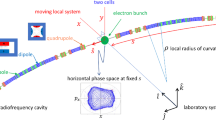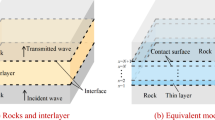Abstract
Wavefronts returning from a scatterer illuminated by an incident transient field convey aspect dependent information about local features of the target. Having high frequency content, they furnish information on structural detail as long as they can be individually resolved, i.e., at early arrival times. At later times, where low frequencies predominate, resonances are formed by collective superposition of wavefronts that have made multiple traversais of the scatterer. These complex resonances are aspect independent, encompass the target as a whole and thereby convey global information. Due to these features, algorithms based on wavefronts alone or on resonances alone are inadequate to cope effectively with late time and early time phenomena, respectively. A hybrid scheme that combines relevant wavefronts and resonances selfconsistently within a single framework can optimize analysis of the scattered field for all observation times. Results for transient scattering by a canonical strip target demonstrate the various physical mechanisms that synthesize the response, and confirm by numerical comparisons the validity of the observations concerning the respective role of wavefronts and resonances.
Analyse
Les fronts d’onde provenant d’un obstacle éclairé par un champ incident transitoire portent des informations sur la forme et les caractéristiques locales de la cible. Grâce à leurs composantes à fréquence élevée, ils fournissent des informations sur les détails de structure tant qu’ils peuvent être résolus individuellement, c’est-à-dire pour des instants d’arrivée précoces. Plus tard, les basses fréquences prédominent et des résonances sont formées par superposition collective de fronts d’onde qui ont traversé l’obstacle plusieurs fois. Ces résonances complexes sont indépendantes de la forme de la cible et donc portent sur l’information globale. Pour toutes ces raisons, les algorithmes basés sur les fronts d’onde seuls ou sur les résonances seules sont inadaptés pour faire face aux phénomènes précoces ou tardifs. Un modèle hybride qui combine de manière autocohérente les fronts d’onde et les résonances significatifs permet une analyse optimale du champ diffracté pour tout instant d’observation. Les résultats pour la diffraction transitoire par une cible en forme de ruban montrent les différents mécanismes physiques qui synthétisent la réponse, et confirment par des comparaisons numériques la validité des observations concernant les rôles respectifs des fronts d’onde et des résonances.
Similar content being viewed by others
References
Felsen (L. B.. Progressing and oscillatory waves for hybrid synthesis of source excited propagation and diffraction.IEEE Trans. AP, USA (1984)32, pp. 775–796.
Friedlander (P. G.. Sound pulses.Cambridge Univ. Press, London (1958).
Baum (C. E.. The singularity expansion method.Transient Electromagnetic Fields [L. B. Felsen], ed., Springer-Verlag, Berlin (1976).
Pearson (L. W.. The singularity expansion method representation of surface currents on a perfectly conducting scatterer. Proc. of theNATO Adv. Res. Workshop on hybrid formulation of wave propagation and scattering [L. B. Felsen], ed.,Nijhoff Publishing Co., The Hague, Netherlands (1984).
Heyman (E., Felsen (L. B.. Creeping waves and resonances in transient scattering by smooth convex objects.IEEE Trans. AP, USA (1983),31, pp. 426–437.
Morgan (M. A.. Singularity expansion representations of fields and currents in transient scattering.IEEE Trans. AP, USA (1984),32, pp. 466–473.
Pearson (L. W.. A note on the representation of fields as a singularity expansion.IEEE Trans. AP, USA (1984),32, pp. 520–524.
Heyman (E., Felsen (L. B.. Wavefront interpretation, ofSem resonances, turn-on times and entire functions Proc. of theNATO Adv. Res. Workshop on hybrid formulation of wave propagation and scattering [L. B. Felsen], ed.,Nijhoff Publishing Co., The Hague, Netherlands (1984).
Felsen (L. B.). Wavefronts, resonances and hybrid forms for identification of transient scattering from targets.AGARD Symp. on Target Identification, held in London, England (Oct. 1984).
Shirai (H.), Felsen (L. B.). Wavefronts and resonances in transient scattering by a flat strip. presented at InternationalIEEE/APS andURSI Symp., Boston, Mass., USA (June 1984).
Shirai (H.), Felsen (L. B.). ModifiedGtd for generating complex resonances for flats strips and disks.IEEE Trans AP, USA. To appear.
Hwu (S. U.), Pearson (L. W.). Numerically determined natural resonances for an infinitely long perfectly conducting strip, InternationalIEEE/APS andURSI Symp., Boston, Mass., USA (June 1984).
Author information
Authors and Affiliations
Rights and permissions
About this article
Cite this article
Felsen, L.B. Wavefronts and resonances for analysis of transient scattering. Ann. Télécommun. 40, 396–401 (1985). https://doi.org/10.1007/BF03003647
Received:
Issue Date:
DOI: https://doi.org/10.1007/BF03003647
Key words
- Wave diffraction
- Electromagnetic wave
- Wavefront
- Resonance
- Multiple diffraction
- Transients
- Strip
- Phénoménologic theory
- Digital method
- Geometrical theory
- Hybrid model
- Singularity method




